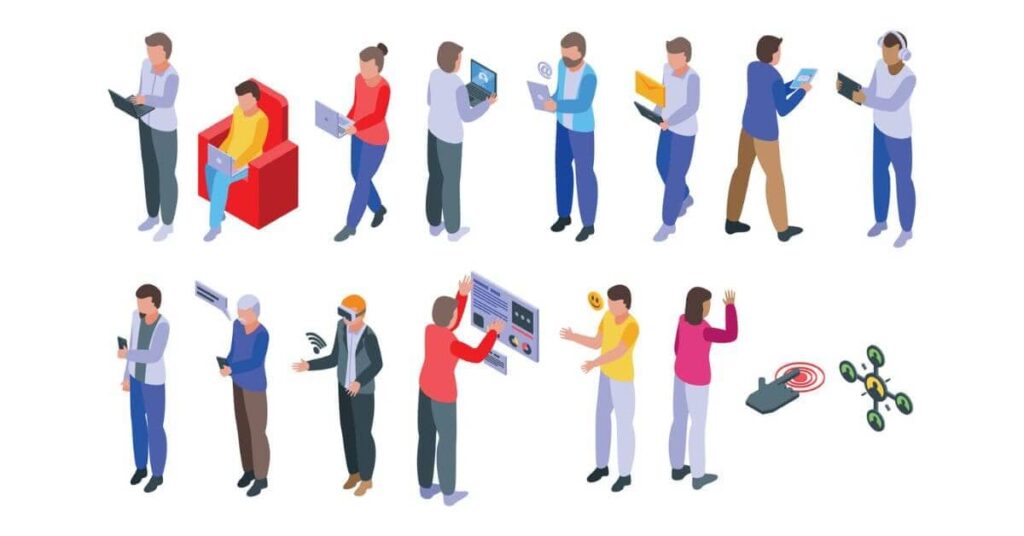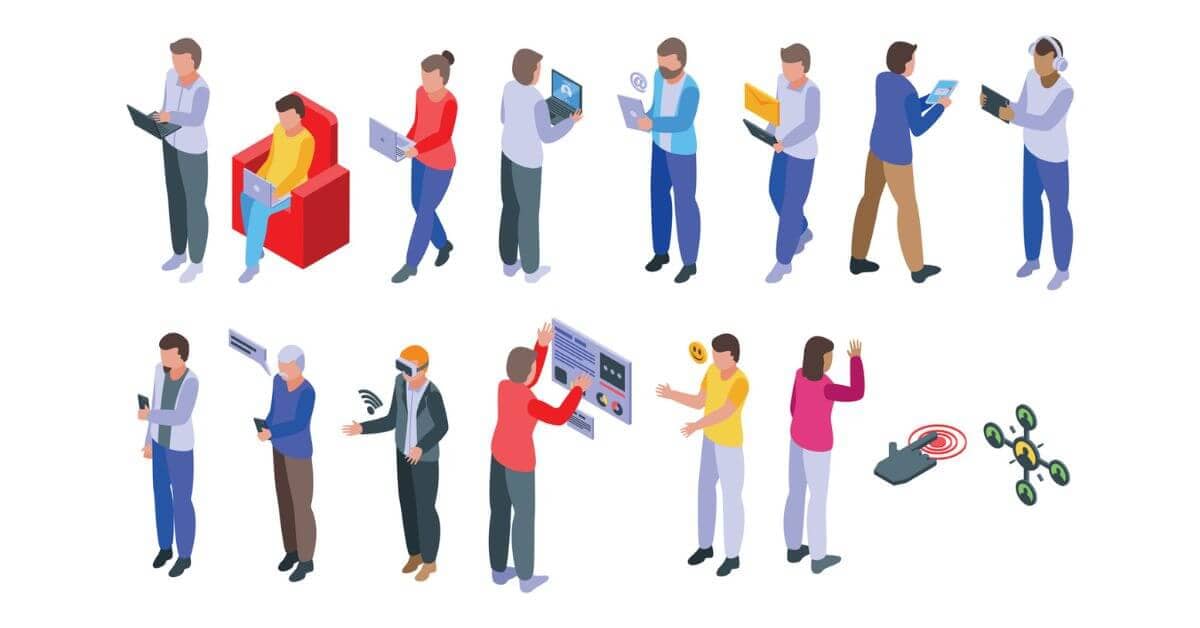[vc_row][vc_column][vc_column_text]

Introduction
Stakeholder Management faces a unique challenge when it comes to project planning, management, and execution. It isn’t just about planning for the work that needs to get done. It is also about managing all of the stakeholders who have their own wants and needs in relation to the project ahead of them. However, if you want your projects to be successful, then you need to know how to engage your stakeholders throughout the process so they are an asset rather than a liability. In this guide, we’re going to show you how that works by exploring what a stakeholder is and how they are critical for project success. Let’s get started!
What exactly is a stakeholder in a project, anyway?
A stakeholder is anyone who has a vested interest in what you are trying to accomplish. This can be a person, group, or organization that is directly involved with the project, has influence over it, and/or stands to gain or lose something from its success or failure (or just plain wants to keep tabs on it).
Stakeholder Management can be internal stakeholders (project team members) or external stakeholders (customers, vendors, and other parties). They can also be active participants in the project (e.g., they are part of your team or call you regularly) or passive observers of progress (they don’t follow up on their own but will expect regular updates). Some stakeholders may have little impact on your project while others wield enormous weight as decision-makers within their organizations.
In short: “A stakeholder is any person outside your organization whose interests may affect your ability to meet objectives.”
The key to good stakeholder management is to define the different types of stakeholders that you have in your project.
Defining the different types of stakeholders that you have in your project is essential to effective stakeholder management. The first step is to identify all the stakeholders, which can be difficult if you are unfamiliar with the project. The best way to do this is by asking questions and taking note of the answers.
Once you have identified all your stakeholders, it’s time to define their roles and responsibilities within your organization or company. You can do this by creating a matrix where each stakeholder type has its own column and adding descriptions for each person under each column title (see example below).
The next step is engaging with these individuals in order to ensure they understand what is expected from them during this process by providing them with clear instructions as well as any important information needed before interacting with other types of stakeholder groups like employees or customers who may not know about their role within a business’ goals either due to lack knowledge about how things work at an enterprise level vs being part of another company all together (like getting involved through volunteering).
A New Way of Building: The Benefits of Modular Construction in 2022
i) Internal Stakeholders
- Internal stakeholders are the people who work for the same organization that is implementing the project. They may be managers, employees, or other stakeholders who are part of the project team. These individuals have access to critical information about your project and could easily provide insights into where it is going wrong if they weren’t properly engaged in stakeholder management.
- It’s important to identify these internal stakeholders because their involvement will help you understand how their department operates and what challenges they face on a daily basis. By learning more about them, you can better manage this type of person in your future projects by giving them context about why certain decisions were made or what needs improvement so that everyone understands where things went wrong or right during each stage of implementation
ii) External Stakeholders
External stakeholders are people who are not directly involved in your project but are affected by the outcome of your project. They may be customers, suppliers, peers, and regulators. As an example:
Customers
Suppliers
Peers
Regulators (local government)
Community (e.g., neighbors of a construction site)
iii) Primary Stakeholders
You can think of the primary stakeholders as the top dogs, the people who have the most to gain or lose from your project. These are usually stakeholders who have a direct impact on your success, but they also have some level of influence over you and your team.
They’re not always easy to identify, but there are some telltale signs: they’re vocal and willing to make their opinions known; they take an active interest in what you’re doing; or they may even be part of your management team (if this is the case, you’ll want to keep them well-informed about everything that’s going on).
iv) Secondary Stakeholders
> Secondary stakeholders are people who are not directly involved in the project but can have a direct impact on the project. They may not be involved in the decision-making process, but their attitudes and behaviors affect other stakeholders. These stakeholders can be internal or external to your organization and sometimes even include customers, suppliers, partners, and third parties.
> Examples:
- A project manager that manages multiple projects will have secondary stakeholders within each of those projects (project team members).
- A manager could be considered a secondary stakeholder if he/she is working on another project at the same time as yours because he/she needs to provide input into your project’s scope and schedule.
v) Passive Stakeholders
Passive stakeholders are neither involved in your project nor do they have any power over it. They don’t know what’s going on, but there may be some things that affect them. How much they know or care about the project is up to them.
They’re not as involved or invested in a process as active stakeholders, but they can have an impact on your work. Passive stakeholders include:
- People who aren’t directly involved with the project but could be impacted by it (for example, people who live near a construction site)
- People who aren’t directly involved with the project yet still have an interest in it (for example, investors)
vi) Active Stakeholder Management
You may be wondering, “What does it mean to be an active stakeholder? Aren’t all stakeholders active in some way?” The answer is no. In fact, there are two types of active stakeholders:
- Those who actively participate in the project and have a vested interest in its success or failure
- Those who are not officially involved but still want to know what’s going on
vii) Low-Key Stakeholders
It’s important to understand that not all stakeholders are equal. Some will be actively involved in the project, while others will be completely uninvolved. These are known as low-key stakeholders.
A low-key stakeholder is a person or organization who is not directly affected by your project and doesn’t have an interest in being involved. They could include:
- Vendors who aren’t contracted to be part of the project (for example, if they’re supplying goods or services)
- People who won’t benefit from a proposed change but may have some indirect benefit (for example, a neighbor whose property value goes up because of the changes)
Remember that even though these people might not be directly affected by your team’s work on a day-to-day basis, it’s still critical for them to know about what you’re doing so that there aren’t any surprises along the way!
viii) High-Key Stakeholders
High-key stakeholders are people who have a lot of power and influence over the project. They might not be part of your team, but they can have a strong impact on your success or failure. The following are examples of high-key stakeholders:
- Your boss (or someone else with authority over you)
- A senior manager of another department within your organization who has a stake in this project
- A stakeholder who has been identified as a leader in their field, such as an industry expert or thought leader
How to Engage Your Project’s Stakeholders
In order to successfully engage your project stakeholders, you first need to define the problem before starting on a solution. Without this step, it’s impossible for stakeholders to focus on the right issues and get buy-in from everyone involved.
Some people think that they can start off by defining goals or milestones without first establishing their purpose and objectives, but that simply won’t work because it doesn’t give any direction on how those goals should be achieved. For example, if your goal is “increase revenues” but there are no specific targets in mind for that increase (e.g., $10 million more per year), then how will you know when you’ve achieved success?
You also need to avoid focusing too much on what other people want from your project—it’s important for them to understand why their role matters and how they can help achieve success with various tasks along the way rather than just provide input into decisions made by others around them who might not even be involved in day-to-day operations of those tasks anyway! In short: Be ambitious but stay realistic about what’s possible within reasonable timeframes; this way everyone shares similar objectives which makes collaboration easier down the road when unforeseen challenges arise during execution stages (more details later).
Conclusion
Stakeholder management is a critical component of running a successful project. The earlier you get to know your stakeholders, the more smoothly things will go down the line, and the less likely you are to miss any critical steps in your process. By using our methodology above, you should be able to break down all aspects of stakeholder management with ease.
[/vc_column_text][/vc_column][/vc_row]
























































